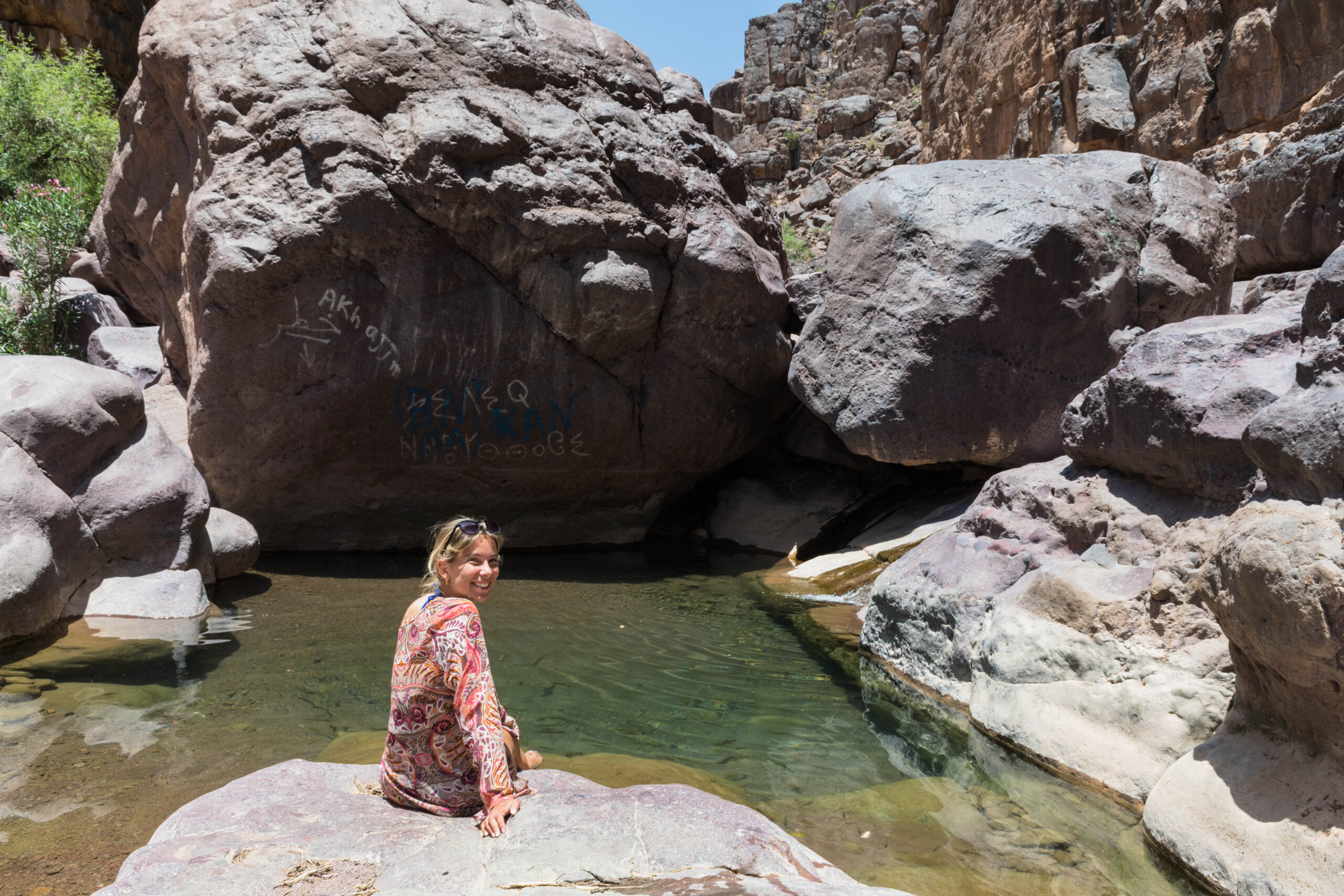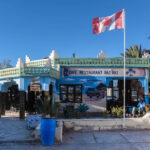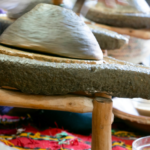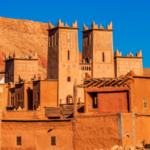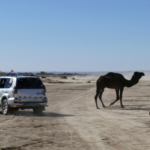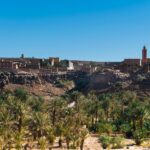Trekking in Jebel Saghro is like stepping into another world, where the stark beauty of the landscape captivates your senses and the silence of the mountains soothes your soul. Nestled between the High Atlas and the Sahara Desert, this lesser-known region of Morocco offers a unique blend of dramatic rock formations, remote Berber villages, and an experience that feels both timeless and unforgettable.
The Allure of Jebel Saghro
Table of Contents
For those who crave adventure off the beaten path, Jebel Saghro is a treasure trove waiting to be discovered. Unlike the crowded trails of the High Atlas, Saghro provides an intimate encounter with nature and local culture. The mountain range is characterized by its rugged terrain, with sharp peaks and deep gorges that have been sculpted over millennia. It’s a land where volcanic origin meets erosion, creating a landscape that is both raw and stunningly beautiful.
Preparing for the Journey
Preparation is key for a successful trek in Jebel Saghro. The climate can be harsh, with temperatures varying significantly between day and night. During the winter months, nights can be particularly cold, while daytime can be pleasantly warm. It’s essential to pack layers, a good sleeping bag, and plenty of water. Trekking here requires a moderate level of fitness, as the trails can be challenging and remote.
One of the most enriching aspects of trekking in Jebel Saghro is the opportunity to connect with the local Ait Atta Berbers. Their traditional way of life, still largely untouched by modern conveniences, offers a glimpse into Morocco’s rich cultural tapestry. As you hike through this region, it’s not uncommon to be invited into a Berber home for a cup of mint tea—a gesture of hospitality that is deeply ingrained in their culture.
The Trekking Experience
Trekking in Jebel Saghro is an immersive adventure through one of Morocco’s most striking and less-traveled landscapes. Starting from the village of Nkob, the trek unfolds over four days, each offering unique and breathtaking experiences.
Day 1: Nkob to Bab n’Ali
Most treks in Jebel Saghro start from the village of Nkob, a small settlement surrounded by palm groves and mud-brick kasbahs. As you leave Nkob, the trail gradually ascends, revealing panoramic views of the Anti-Atlas Mountains. The path winds through rocky plateaus and arid valleys, leading you to the dramatic rock towers of Bab n’Ali.
These twin rock spires rise majestically from the desert floor, marking one of the most iconic landmarks in the region. Setting up camp beneath these natural monoliths is a surreal experience. As the sun sets, casting a golden hue over the landscape, the sheer isolation and beauty of the place take on a magical quality.
Day 2: Bab n’Ali to Igli
The second day of trekking takes you deeper into the heart of Jebel Saghro. The trail meanders through narrow gorges and across rocky outcrops, with occasional encounters with nomadic herders guiding their flocks of goats and sheep. The simplicity of their lives, dictated by the rhythms of nature, adds a contemplative dimension to the journey.
Reaching the campsite at Igli, you’ll find a peaceful oasis where a small spring provides much-needed water. The night sky here is a blanket of stars, unmarred by light pollution, offering a celestial display that feels almost sacred. Around the campfire, stories are shared, and the sense of camaraderie among trekkers grows stronger.
Day 3: Igli to Handour
From Igli, the trek continues towards Handour, passing through some of the most spectacular scenery in Jebel Saghro. The landscape is a mosaic of basalt cliffs, hidden valleys, and ancient petroglyphs that whisper stories of civilizations long gone. Each step brings a new perspective, a new marvel to behold.
Handour is a small Berber village where life moves at a slower pace. Here, you can witness traditional weaving, taste homemade bread baked in clay ovens, and perhaps even join a local festival if your timing is right. The connection to the land and its people deepens with every interaction, making the trek not just a physical journey, but a cultural and spiritual one as well.
Day 4: Handour to Tagdilt
The final leg of the trek takes you from Handour to the village of Tagdilt. This section of the trail is characterized by its contrasting landscapes—arid plains giving way to lush oases, and barren hillsides revealing hidden springs. The sense of accomplishment as you descend into Tagdilt is immense, with the entire journey unfolding behind you in a tapestry of memories.
Reflections on the Journey
Trekking in Jebel Saghro is more than just a physical challenge; it’s an immersion into a world where nature and culture are intertwined in the most profound ways. The isolation of the region, coupled with the hospitality of the Berber people, creates an experience that is both humbling and enriching.
Every trekker comes away with something unique from Jebel Saghro. For some, it’s the stark beauty of the landscape that leaves an indelible mark. For others, it’s the quiet moments of reflection under a starlit sky or the warmth of a shared meal in a Berber tent. The mountains have a way of revealing truths about oneself, of stripping away the superfluous and leaving only what is essential.
Practical Tips
- Guided Treks: While it’s possible to trek Jebel Saghro independently, hiring a local guide can enhance your experience. Guides provide invaluable knowledge about the terrain, local culture, and can navigate the more challenging sections of the trail.
- Best Time to Visit: The ideal time to trek in Jebel Saghro is between October and April, when the weather is cooler and more stable. Avoid the summer months, as temperatures can soar to uncomfortable levels.
- Respect Local Customs: The Ait Atta Berbers are welcoming and hospitable, but it’s important to respect their customs and traditions. Dress modestly, ask for permission before taking photographs, and always show gratitude for their hospitality.
- Leave No Trace: The beauty of Jebel Saghro lies in its pristine nature. Ensure you leave no trace by carrying out all your rubbish, respecting wildlife, and staying on designated trails.
In conclusion, Jebel Saghro offers a trekking experience that is both challenging and deeply rewarding. It’s a journey that touches the heart and soul, leaving trekkers with memories that last a lifetime. Whether you’re an experienced hiker or a curious adventurer, the raw beauty and rich culture of Jebel Saghro await you with open arms.
Join countless satisfied travelers who have experienced Morocco with us. We customize every detail to make your Marrakech Sahara Desert Tours uniquely yours. Explore the Magic of Morocco with us!
